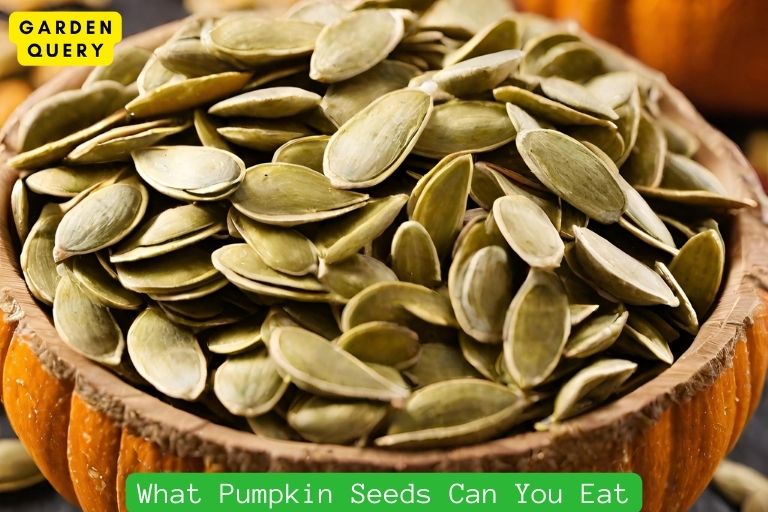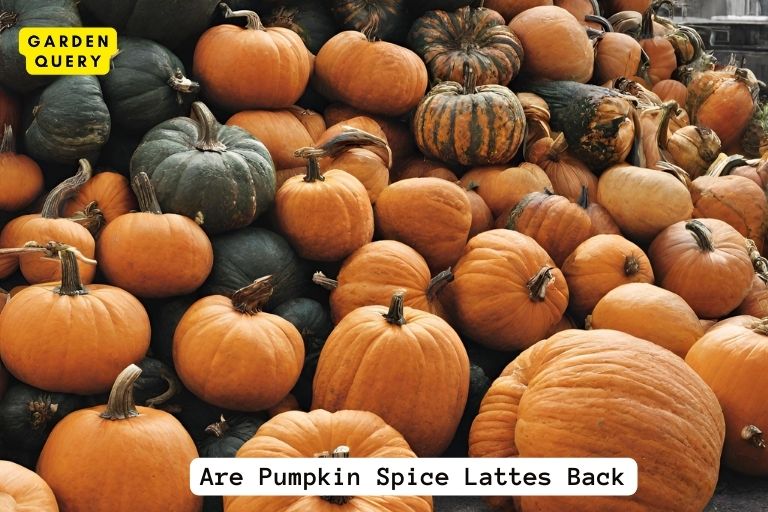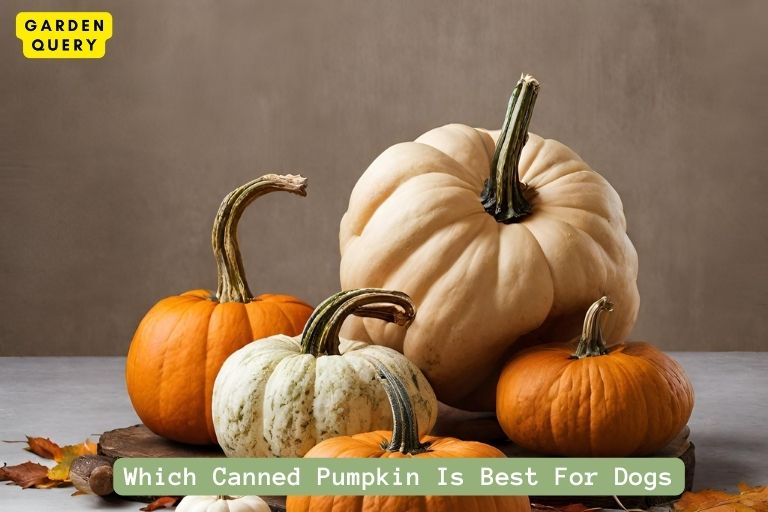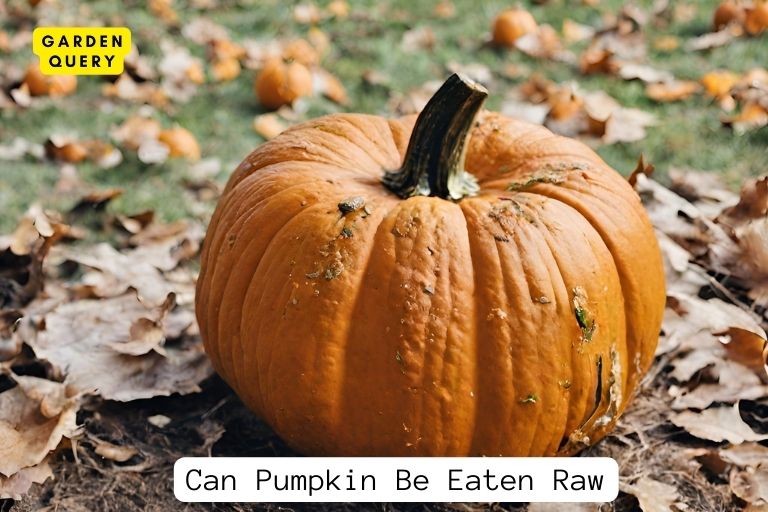How Do Pumpkins Reproduce?
Pumpkins reproduce through pollination, requiring bees or other pollinators to transfer pollen from male flowers to female flowers.
Pumpkins, like many plants, are monoecious, bearing both male and female flowers on the same plant.
Male flowers produce pollen while female flowers house the ovaries where fruit develops.
Pollination occurs when pollen from the male flowers is transferred to the stigma of the female flowers, kickstarting the fruiting process.
Bees are vital in this process as they visit flowers, inadvertently carrying pollen between them.
Once pollinated, the female flower transforms into a pumpkin, ripening over time.
Key Takeaways
- Monoecious Nature: Pumpkins feature separate male and female flowers on the same plant, a common trait in various plant species.
- Pollination Process: Bees play a crucial role in pumpkin reproduction, facilitating the transfer of pollen for fruit development.
- Fruiting Transformation: After successful pollination, the female flower transforms into the iconic pumpkin.
- Ripening Cycle: Pumpkins gradually ripen over time, influenced by factors like temperature and sunlight exposure.
Pumpkins Reproduce
Overview of pumpkin reproduction process
Pumpkins are fascinating plants that reproduce through a process known as pollination.
Like other members of the cucurbit family, which includes cucumbers, melons, and squash, pumpkins have both male and female flowers.
The female flowers produce the fruit, while the male flowers produce pollen.
Pumpkin plants rely on insects, particularly bees, to transfer pollen from the male flowers to the female flowers.
When a bee visits a male flower, it collects pollen on its body.
The bee then moves on to a female flower, where some of the pollen brushes off and pollinates the flower. This fertilization process is essential for fruit development.
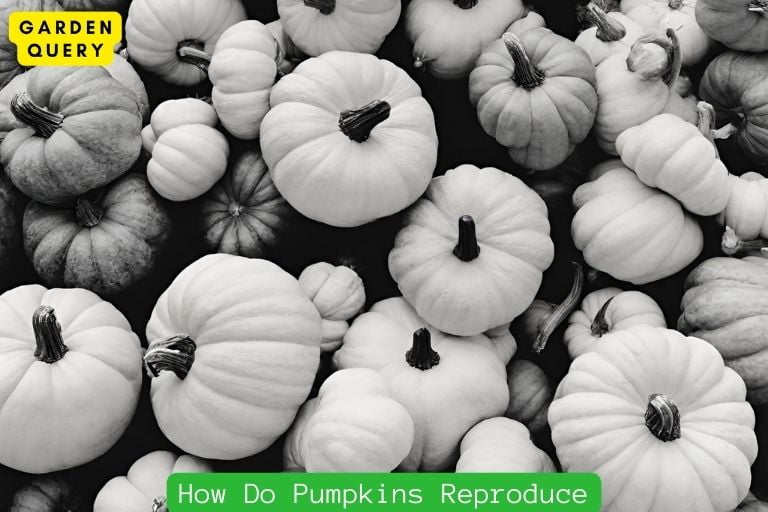
Once the female flower is pollinated, it begins to develop a fruit under the flower. The fruit starts small and gradually enlarges as it matures. Inside the fruit, seeds begin to form.
These seeds are what allow the pumpkin to reproduce and grow new plants.
When the pumpkin ripens, it releases the seeds from the fruit. The seeds can then be collected and used for planting in the next growing season.
Each pumpkin can contain hundreds of seeds, ensuring the potential for many new plants.
Importance of understanding pumpkin reproduction
The process of pumpkin reproduction is valuable for several reasons.
- For gardeners and farmers, knowing how pumpkins reproduce allows them to effectively pollinate their plants for optimal fruit production.
- By ensuring proper pollination, they can increase their yield and have a bountiful harvest.
- Pumpkin reproduction is essential for plant breeders and researchers.
- They can utilize this knowledge to develop new varieties of pumpkins through controlled breeding.
- By cross-pollinating plants with desired traits, such as improved disease resistance or unique shapes, they can create pumpkins that meet specific market demands.
- Learning about pumpkin reproduction can be a fun and engaging activity for children and individuals interested in gardening.
- It provides an opportunity to observe nature in action and learn about the intricate process of plant reproduction.
- Pumpkin reproduction involves the transfer of pollen from male flowers to female flowers, leading to fruit development and seed formation.
- This process is crucial for efficient pumpkin production, breeding new varieties, and providing educational experiences.
So next time you see a pumpkin, take a moment to appreciate the remarkable journey it took to come into existence.
Read More: How Do Pumpkin Plants Grow?
Male and Female Flowers
When it comes to pumpkin reproduction, there is an interesting interplay between male and female flowers.
The characteristics of both can shed light on how pumpkins reproduce and grow.
Characteristics of male pumpkin flowers
- Male pumpkin flowers are typically the first ones to appear on the plant.
- They can be identified by their slender stem and a single stamen in the center.
- The stamen is the part of the flower that produces pollen, which is essential for fertilization.
- These flowers do not have a fruit behind them and are solely focused on pollen production.
Characteristics of female pumpkin flowers
Female pumpkin flowers appear slightly later than the male flowers.
They can be recognized by their tiny fruit or future pumpkin behind the flower.
The female flower has a stigma in the center, which is receptive to pollen. It also has a wider stem compared to the male flower.
The purpose of the female flower is to receive the pollen and initiate the process of fertilization.
Pollination and fertilization
For pumpkins to reproduce, pollination needs to occur between the male and female flowers.
This can happen through the help of various pollinators, such as bees, butterflies, or even wind. When a pollinator visits a male flower, it picks up pollen grains from the stamen.
The pollinator then transfers this pollen to the stigma of a female flower during subsequent visits.
Once the pollen reaches the stigma, it travels down the style into the ovary, where fertilization takes place.
Fruit development and seed formation
After successful fertilization, the pumpkin starts to develop. As the fruit grows, the flower behind it withers and eventually falls off.
Inside the pumpkin, seeds begin to form within the ovary. These seeds are the result of fertilization and contain the genetic material necessary for the next generation of pumpkins.
Pumpkin reproduction involves the intricate dance between male and female flowers.
Pollination and subsequent fertilization lead to the development of the pumpkin itself, as well as the formation of seeds for future growth.
This process highlights the importance of pollinators in the reproductive cycle of pumpkins.
Read More: How Do Pumpkin Vines Grow?
Pollination
Have you ever wondered how pumpkins reproduce? The process of pumpkin reproduction involves an essential step known as pollination.
It is through pollination that pumpkins produce seeds, ensuring the continuation of their species for future generations.
Process of pollination in pumpkin plants
The pollination process in pumpkin plants starts with the male and female flowers.
Male flowers have long, slender stems called stamens that contain the pollen.
Female flowers, on the other hand, have a small, bulbous structure at the base called the ovary, which eventually matures into the pumpkin.
When the male flowers open and release their pollen grains, they need to be transferred to the female flowers.
This process is primarily achieved by bees and other pollinators, which play a vital role in pumpkin pollination.
Role of bees and other pollinators
- Bees are the most common pollinators for pumpkin plants. As they fly from flower to flower in search of nectar, pollen grains stick to their bodies.
- When a bee visits a female flower, some of the pollen grains rub off onto the stigma, a sticky surface inside the flower. This transfer of pollen is known as pollination.
- The pollen that reaches the stigma travels down the style, a tube connecting the stigma to the ovary.
- Inside the ovary, the fertilization process occurs, leading to the development of seeds within the pumpkin.
- Other pollinators, such as butterflies and moths, may also contribute to the pollination process, although bees are generally the most effective due to their fuzzy bodies that attract and retain the pollen grains.
- It’s important to note that pumpkins are not self-pollinating, which means they require cross-pollination between different plants for successful reproduction.
- This reliance on pollinators makes it crucial to create a pollinator-friendly environment in pumpkin patches and gardens, such as planting flowers that attract bees and providing a water source for them.
- The process of pumpkin reproduction involves the crucial step of pollination, where bees and other pollinators play a vital role in transferring pollen between male and female flowers.
- By ensuring a favorable environment for pollinators, gardeners can help promote successful pumpkin reproduction and the growth of healthy pumpkin plants
Fertilization
Have you ever wondered how pumpkins reproduce and produce those delicious seeds? Pumpkin reproduction involves a fascinating process that starts with fertilization.
Fusion of male and female gametes
Pumpkin plants have both male and female flowers.
The male flowers produce pollen, which contains the male gametes, while the female flowers contain the ovules, which house the female gametes.
Fertilization occurs when pollen from the male flower reaches the stigma, which is the receptive part of the female flower.
Pollen grains then travel through a tube called the style and reach the ovary, where fertilization takes place.
This process is facilitated by insects, wind, or even manual pollination by gardeners.
Formation of pumpkin seeds
After fertilization, the ovules develop into seeds within the pumpkin's ovary.
The fertilized ovule forms an embryo, which will eventually develop into a new pumpkin plant.
As the pumpkin grows, the ovary expands, providing the necessary space for the seeds to develop.
Each seed is enveloped by a protective outer layer called the seed coat, which helps safeguard the seed during its journey as it eventually falls from the pumpkin and has the potential to germinate and grow into a new plant.
The size and shape of the pumpkin will determine the number of seeds it produces.
It’s worth noting that pumpkins are not self-pollinating, which means they require cross-pollination with other pumpkin plants to reproduce successfully.
This cross-pollination can occur through pollinating insects or even the wind.
How pumpkins reproduce is not only fascinating but also essential for gardeners and farmers who want to ensure a successful pumpkin harvest.
By providing the right conditions for pollination and seed formation, you can enjoy a bountiful crop of pumpkins with delicious seeds for cooking or planting in the next growing season.
So the next time you carve a pumpkin for Halloween or savor a pumpkin pie, take a moment to appreciate the intricate reproductive process that brings these delightful fruits to life.
Here’s a table summarizing the key points:
| Key points | Explanation |
|---|---|
| Fusion of male and female gametes | – Pumpkin plants have both male and female flowers. – Fertilization occurs when pollen from the male flower reaches the stigma of the female flower through a tube called the style. – Pollination can be facilitated by insects, wind, or manual intervention by gardeners. |
| Formation of pumpkin seeds | – After fertilization, the ovules develop into seeds within the pumpkin’s ovary. – Each seed is enveloped by a protective seed coat. – Pumpkins are not self-pollinating and require cross-pollination with other pumpkin plants. |
Seed Development
Stages of seed development in pumpkins
Pumpkins are not just a Halloween decoration; they also provide tasty treats and even the potential for the next generation.
The seed development process in pumpkins can be divided into several stages.
- Fertilization: The first stage begins with pollination when pollen from the male flower reaches the stigma of the female flower, typically with the help of bees or other insects. Once fertilized, the ovary of the female flower starts to develop into a fruit, which is the pumpkin.
- Seed Maturation: As the pumpkin grows, the seeds inside it start to develop. The ovules, which contain the potential seeds, undergo maturation and differentiation. They start to develop a protective seed coat, an embryo, and endosperm.
- Seed Ripening: The pumpkin continues to grow and change color while the seeds are going through the final stages of ripening. The seeds absorb nutrients from the surrounding endosperm, which provides nourishment for their growth.
- Seed Dispersal: Once the pumpkin reaches maturity, it starts to decompose, and the seeds are released. Various factors, such as wind, animals, or human intervention, can aid in seed dispersal. This allows the seeds to find new locations where they can germinate and grow into new pumpkin plants.
Factors influencing seed growth
Several factors can influence the growth and development of pumpkin seeds. These include:
- Pollination: Proper pollination is essential for the pumpkin flowers to produce viable seeds. Bees or other pollinators play a crucial role in ensuring successful pollination by transferring pollen between flowers.
- Temperature: Pumpkins prefer warm temperatures for optimal seed development. Extreme heat or cold can hinder seed growth or even lead to seed abortion.
- Moisture: Adequate water is necessary for seed development. Insufficient irrigation can result in poor seed quality, while excessive water can cause rotting or fungal diseases.
- Nutrition: Providing the pumpkins with the right nutrients, especially those rich in phosphorus and potassium, can promote healthy seed development.
- Disease and pests: Diseases and pests can negatively impact seed development. Proper pest control measures and disease prevention strategies, such as regular inspection and the use of organic or chemical treatments, can help protect the seeds.
The stages of seed development and the factors that influence it can help growers ensure successful pumpkin reproduction.
By providing the necessary conditions and nurturing the seeds, growers can enjoy the bountiful harvest of pumpkins and continue the cycle of reproduction for generations to come.
Read More: How Cook Pumpkin In Oven?
Germination
Have you ever wondered how pumpkins reproduce? Pumpkins are intriguing plants that produce delicious fruit and are a staple decoration during the fall season.
The process of pumpkin reproduction can help you appreciate the efforts required to grow these delightful plants.
Conditions required for pumpkin seed germination
For pumpkin seeds to germinate successfully, several conditions must be met:
- Optimal temperature: Pumpkin seeds prefer warm soil temperatures for germination. The ideal range is between 75 and 85 degrees Fahrenheit (24-29 degrees Celsius).
- Adequate moisture: Pumpkin seeds need moist soil to germinate. Ensure that the soil is consistently damp but not waterlogged. Over-watering can lead to rotting of the seeds.
- Good soil drainage: Proper drainage is crucial to prevent waterlogged soil, which can suffocate the seeds and hinder germination.
- Full sun: Pumpkins thrive in bright sunlight. Choose a planting location that receives at least 6-8 hours of direct sunlight daily.
Timeframe for germination
- The timeframe for pumpkin seed germination can vary, depending on various factors such as temperature, soil moisture, and seed quality.
- In general, pumpkin seeds will germinate within 4 to 10 days.
- However, it is essential to note that germination is just the first step in the pumpkin’s reproductive process.
- After germination, the seedlings will continue to grow and develop into mature plants, producing vines and eventually flowers.
- The flowers play a crucial role in pumpkin reproduction by attracting pollinators, such as bees, which transfer pollen from male to female flowers.
- Once the female flower is pollinated, it develops into a fruit, which we commonly refer to as a pumpkin.
- The fruit will continue to grow and mature until it reaches its full size and is ready for harvest.
- The process of pumpkin reproduction can be a fascinating journey as you witness the transformation of a tiny seed into a charming pumpkin.
- Whether you are growing pumpkins for culinary delight or decorative purposes, knowing the necessary conditions for germination and the subsequent stages of growth can help you achieve a successful harvest.
- So, get ready to sow your pumpkin seeds and enjoy the rewarding process of pumpkin reproduction!
Conclusion
Pumpkins’ reproduction cycle is a marvel of nature, showcasing intricate processes where male and female flowers harmoniously interact.
This process sheds light on the crucial role of pollinators like bees and the delicate balance required for fruitful pumpkin harvests.
As these squash plants yield their iconic fruit, their reproduction story remains a testament to the wonders of natural cycles, emphasizing the interdependence between plants and their pollinators
- Best Therapists In Dallas - February 1, 2024
- Holly Willoughby Husband: Holly Willoughby’s Love Story - January 30, 2024
- Holly Willoughby Dress: 5 Style Secrets and 7 Must-Know Career Milestones - January 30, 2024
